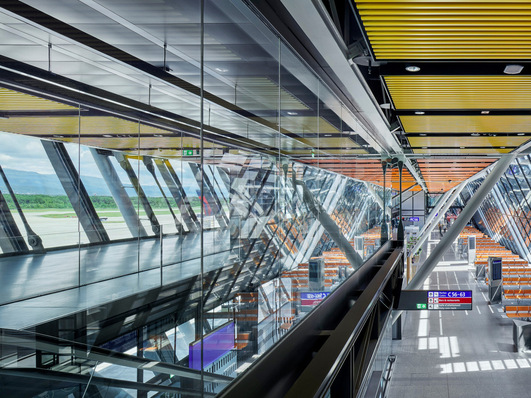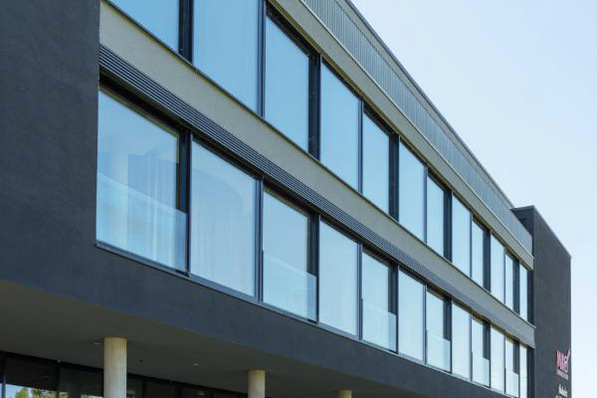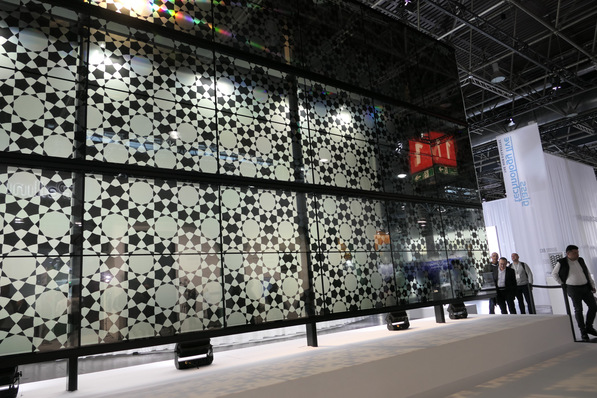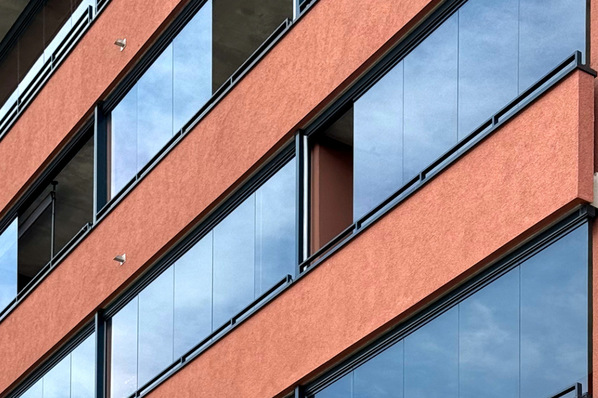Frankfurt’s Messeturm was built in 1990 in the Art Deco architectural style and was considered the tallest building in Europe at the time. The high-rise was designed by the German-American architect Helmut Jahn.
The architect envisaged only a few minor but striking changes for the conversion. The base of the building will receive four semicircular bays made of laminated facade and flat roof insulating glass. The curved facade glasses, measuring just under 2.8m x 17m, create a spacious, light-flooded lobby area that invites visitors to linger. There will be a new café-bar and restaurant that will cater for the physical well-being of staff and visitors, both inside and outside the building.
Lamination-bent facade panes artificially aged

sedak
This is the first time in the world that laminated curved glass has been installed in a high-rise building in these dimensions. The lamination-bent facade panes of the "pencil", as people in Frankfurt affectionately call the skyscraper, were artificially aged to minimise springback during the bending process. For this process, the heat-soak oven had to be adapted to the unusual size of the glasses. The 36 coated moulded insulating glasses with Double Vision print for the glass roof of the exposed bays complete the project and provide optimal solar protection.
The facade of the tower is made of polished red granite. With the addition of the impressive glass rotunda, the tower now has a unique combination of traditional and modern elements.
sedak expertise in the project
There are various methods for bending glass, which are individually adapted to the respective architectural design. Many factors such as bending radii, performance values, glass size and finishes influence the manufacturing process.
Laminated bending for maximum optical quality
In the production of curved glass, sedak has perfected a tried and tested manufacturing process: cold bending using the shaping lamination process. In this process, the individual glass panes of a laminated package are deformed before the lamination process in order to laminate them in this geometry. The finished laminated composite sheet retains the geometric pre-curvature after the autoclave process without relying on a shaping substructure.
See also: A wavelike glass facade near the River Seine
The particular advantages of cold bending laminated glass are mainly the higher optical quality of the glass due to the low distortions and reflections. When cold bending glass, the minimum bending radius is approximately 1500 times the thickness of the glass (10mm: bending radius 15m). Tighter radii are also possible if necessary. Laminated bent glass is available up to 3.6 x 20m in cylindrical and spherical curvature.
Gravity and ESG/TVG bending
Extreme radii, such as s-shaped glass waves, half shells or freeforms up to a size of 3.60 x 11.20m are produced using the gravity or ESG/TVG bending process. So-called hot-bent glass of the highest quality is supplied by the sedak subsidiary sunglass industry srl, which has been part of the group of companies since 2018.
Also interesting: Rope facade for Penn Station in New York
sunglass industry has unique expertise in gravity and ESG/TVG bending. In both processes, the glass is heated to approximately 600 degrees Celsius up to the transformation range, which enables the extraordinary bending of glass. With the highest level of technical expertise, sunglass industry delivers exceptional shapes for outstanding architectural projects.













